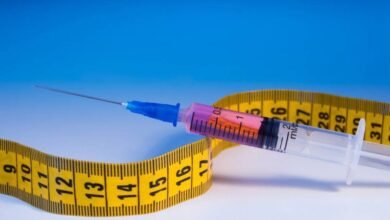Ultra-Low Freezers in Biomedical Research:
Supporting Breakthrough Discoveries and Innovations

Introduction:
Ultra-low freezers are indispensable tools in biomedical research, providing the necessary storage conditions for preserving biological samples, reagents, and specimens at ultra-low temperatures. These freezers are crucial for maintaining the integrity of sensitive materials and are instrumental in supporting breakthrough discoveries and innovations in various fields of biomedical research. This article explores the significant role of ultra-low freezers in biomedical research, highlighting their importance in sample preservation, data reproducibility, and the advancement of scientific knowledge, with a particular focus on their synergy with blood bank storage.
Importance of Ultra-Low Freezers in Biomedical Research:
Biomedical research relies heavily on the availability of high-quality biological samples and reagents for experimentation and analysis. Ultra-low freezers play a vital role in this process by providing a controlled environment with temperatures typically ranging from -80°C to -150°C, ensuring the long-term preservation of samples and maintaining their molecular integrity.
- Preservation of Biological Samples: Ultra-low freezers are used to store a wide range of biological samples, including cell lines, tissues, DNA/RNA samples, proteins, and enzymes. By maintaining these samples at ultra-low temperatures, researchers can prevent degradation, denaturation, and enzymatic activity, preserving their structural and functional properties for extended periods.
- Support for Long-Term Studies: Biomedical research often involves longitudinal studies and longitudinal cohort studies that require long-term storage of samples collected over time. Ultra-low freezers provide a reliable storage solution for maintaining sample integrity over months or even years, enabling researchers to analyze samples at various time points and track changes over time.
- Facilitation of Reproducible Research: Reproducibility is a cornerstone of scientific research, and the integrity of stored samples is essential for ensuring the reproducibility of experimental results. Ultra-low freezers contribute to data reproducibility by preserving samples under consistent conditions, minimizing variability, and facilitating reliable comparisons between different experiments and research studies.
- Storage of Rare and Valuable Samples: Biomedical research often involves the use of rare or irreplaceable samples obtained from patients, animal models, or unique biological sources. Ultra-low freezers provide a secure and stable environment for storing these valuable samples, minimizing the risk of sample loss or damage and maximizing their research potential.
Ultra-Low Freezers in Blood Bank Storage:
Blood bank storage represents a critical application area for ultra-low freezers, where the preservation of blood components and derivatives is essential for transfusion medicine, clinical diagnostics, and therapeutic interventions. Ultra-low freezers play a crucial role in blood bank storage by ensuring the long-term viability and quality of blood products, facilitating safe and effective transfusion practices, and supporting advances in transfusion medicine research.
- Preservation of Blood Components: Blood bank storage encompasses the storage of various blood components, including whole blood, red blood cells, platelets, plasma, and cryoprecipitate. Ultra-low freezers maintain these blood components at ultra-low temperatures, extending their shelf life and preserving their therapeutic properties for transfusion.
- Storage of Rare Blood Types: Ultra-low freezers provide a secure storage environment for rare blood types and rare donor samples, ensuring their availability for patients with specific transfusion needs. These freezers enable blood banks to maintain an inventory of rare blood products, reducing the risk of shortages and improving patient access to compatible blood products.
- Support for Research and Development: Blood bank storage facilities often serve as repositories for research and development activities in transfusion medicine and hematology. Ultra-low freezers store blood samples, plasma aliquots, and other blood derivatives used in research studies, clinical trials, and diagnostic assays, supporting scientific discoveries and therapeutic innovations in blood-related disorders.
- Quality Control and Regulatory Compliance: Blood bank storage facilities must adhere to stringent quality control and regulatory standards to ensure the safety, purity, and potency of stored blood products. Ultra-low freezers equipped with temperature monitoring and alarm systems help blood banks maintain compliance with regulatory requirements, monitor storage conditions, and safeguard the integrity of stored blood components.
Case Study: Ultra-Low Freezer Implementation in Blood Bank
Blood Bank , a leading blood banking organization, recently upgraded its blood bank storage facilities with state-of-the-art ultra-low freezers to enhance sample preservation and storage capabilities. The ultra-low freezers provide precise temperature control, uniform temperature distribution, and advanced features such as remote monitoring and alarm systems. By implementing ultra-low freezers, Blood Bank has improved the long-term storage of blood components, optimized transfusion practices, and supported research initiatives in transfusion medicine and hematology.
Conclusion:
Ultra-low freezers play a pivotal role in biomedical research by providing reliable storage solutions for preserving biological samples, reagents, and specimens at ultra-low temperatures. In the context of blood bank storage, ultra low freezers are indispensable tools for maintaining the integrity of blood components, supporting transfusion medicine practices, and facilitating research and development activities in hematology and transfusion medicine. As advancements in ultra-low freezer technology continue to evolve, these critical storage devices will undoubtedly contribute to the advancement of scientific knowledge, the development of novel therapies, and the improvement of patient care in biomedical research and clinical practice.



